
漢德百科全書 | 汉德百科全书
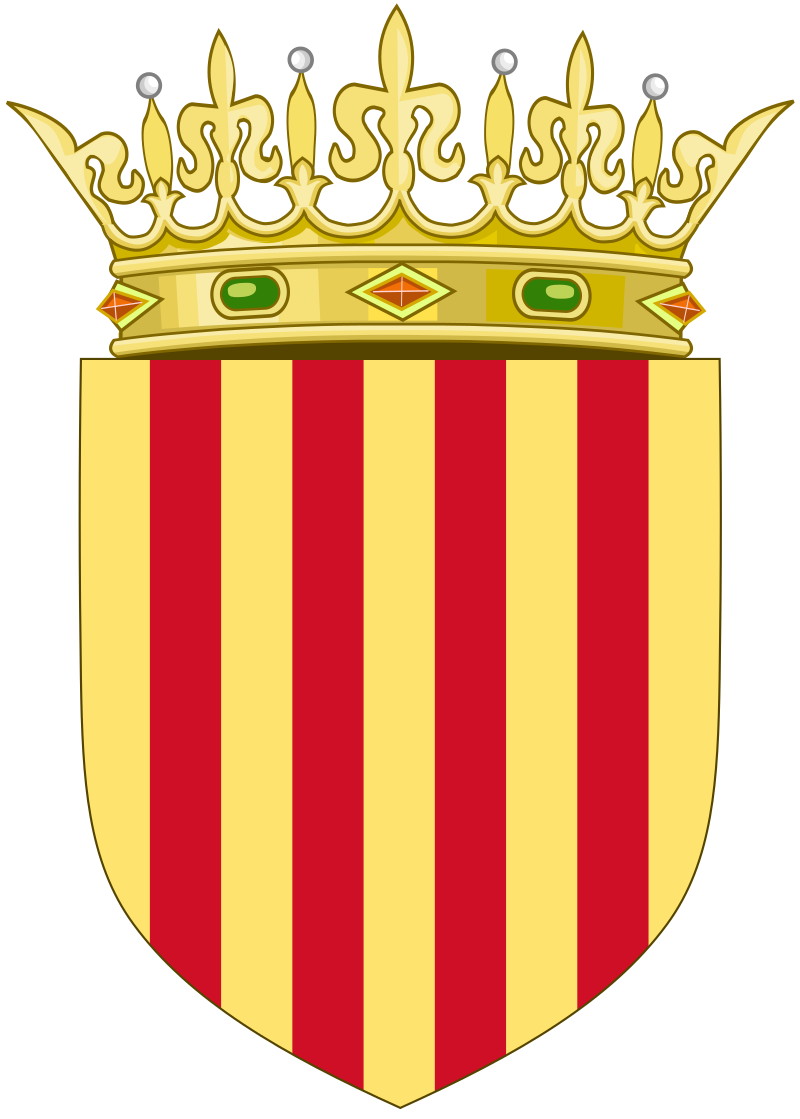
Unter dem Begriff Krone von Aragonien (spanisch Corona de Aragón, aragonesisch Corona d’Aragón, katalanisch Corona d’Aragó) werden Herrschaftsgebiete unterschiedlicher Verfasstheit zusammengefasst, die zwischen 1137 und 1516 bzw. 1714 in Personalunion von den Königen von Aragonien regiert wurden. Dazu gehörten die Königreiche Aragonien, Mallorca, Valencia, Sizilien, Sardinien, Korsika und Neapel, die Herzogtümer Athen und Neopatria, die Markgrafschaft Provence, das Fürstentum Katalonien (die Grafschaften Barcelona, Roussillon und Cerdanya) und die Herrschaft Montpellier.[1]
Die Herrscher der Krone von Aragonien und von Spanien zählten und zählen in ihrer Titulatur eine große Anzahl von Herrschaftsgebieten auf. Diese Aufzählungen entsprachen bzw. entsprechen aber nur zum Teil den wirklichen Herrschaftsverhältnissen.[2]
Von 1516 bis 1707 waren die einzelnen Herrschaftsgebiete der Krone von Aragonien Teile des Herrschaftsgebietes der Krone von Spanien. Dabei blieben die Staaten als solche und ein großer Teil ihrer Rechtstraditionen (Usatges) und Sonderrechte (Fueros) erhalten.
阿拉贡联合王国(加泰罗尼亚语:Corona d'Aragó;拉丁语:Corona Aragonum;西班牙语:Corona de Aragón[注 1])是一个复合君主国[1],同时也是指由阿拉贡王国及巴塞罗那伯国的君主统治的王国[2]和地区[3]的联邦。在14至15世纪,阿拉贡联合王国达到顶峰。此时它是具有制海权的国家,控制着西班牙东部、法国西南部以及远至希腊的地中海主要岛屿。除了在君主一级由国王统治,各个构成国的政治上并没有统一。每个王国具有自己的法律等一些权力。所以,阿拉贡联合王国和阿拉贡王国的区别在于后者是前者的一部分。1469年,阿拉贡王国和卡斯蒂利亚王国通过王朝婚姻联合[4]。1516年,两位国王的女儿胡安娜一世和外孙卡洛斯一世母子名义上成为两国的共治国王,但胡安娜事实上被卡洛斯囚禁。尽管这时的西班牙是一个分散的国家,但领土巩固的过程已经完成,统一于唯一君主之下。1555年胡安娜驾崩,卡洛斯成为唯一君主。这使得在卡洛斯的儿子费利佩二世年间,收复失地运动完成。1716年,费利佩五世在西班牙王位继承战争中获胜,加上新基本法令的颁布,西班牙王国得以建立。
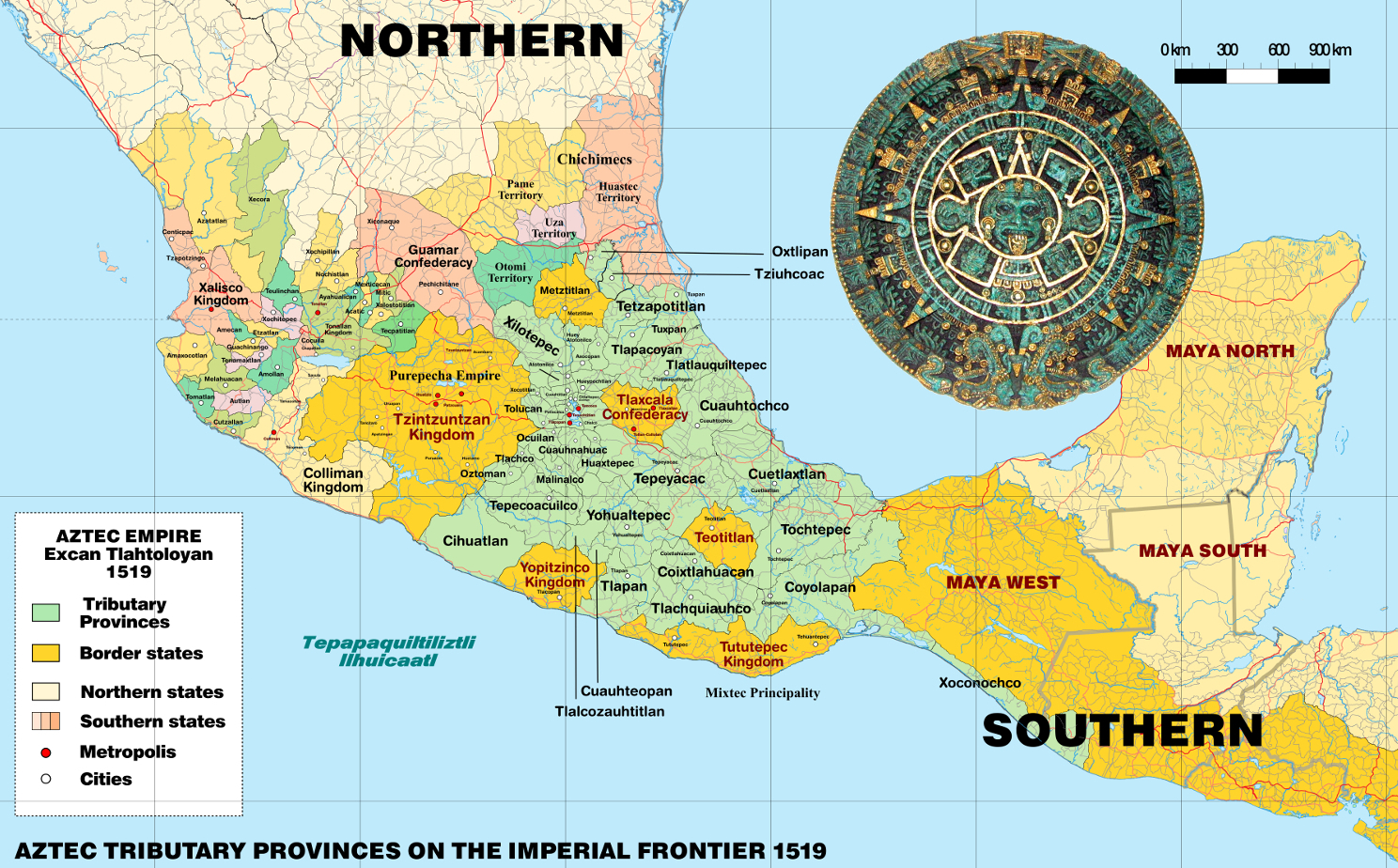
Die Azteken (von Nahuatl aztecatl, deutsch etwa „jemand, der aus Aztlán kommt“) waren eine mesoamerikanische Kultur, die zwischen dem 14. und dem frühen 16. Jahrhundert existierte. Im Allgemeinen bezeichnet man mit dem Begriff „Azteken“ die ethnisch heterogene, mehrheitlich Nahuatl sprechende Bevölkerung des Tals von Mexiko; im engeren Sinne sind damit aber nur die Bewohner von Tenochtitlán und der beiden anderen Mitglieder des sogenannten „Aztekischen Dreibundes“, der Städte Texcoco und Tlacopán, gemeint.
Ab dem späten 14. Jahrhundert weiteten die Azteken im Laufe der Jahre ihren politischen und militärischen Einfluss auf die umliegenden Städte und Völker aus, die nicht direkt dem Reich angegliedert, sondern zur Zahlung von Tributen gezwungen wurden. Auf dem Höhepunkt ihrer Macht kontrollierten sie weite Teile Zentralmexikos mit dem Tal von Mexiko als Zentrum. Zwischen 1519 und 1521 wurden die Azteken schließlich von den Spaniern unter Hernán Cortés unterworfen.
Die Azteken bezeichneten sich selbst meist als Mexica [meːˈʃiʔkaʔ], nach dem Namen des Ortes oder der Region Mexico – der Ursprung des heutigen Ländernamens Mexiko – bzw., nach ihren Siedlungsplätzen Tlatelolco und Tenochtitlán, auch Tlatelolca [tɬateˈloːlkaʔ] und Tenochca [teˈnoːtʃkaʔ]. In alten Quellen wird der Begriff „Azteken“ nur im Zusammenhang mit dem mythischen Herkunftsort Aztlán verwendet. Der erste, der ihn in moderner Zeit benutzte, war der Jesuit Francisco Javier Clavijero im 18. Jahrhundert; bekannt wurde er jedoch erst durch Alexander von Humboldt.
阿兹特克或阿兹台克是存在于14世纪至16世纪的墨西哥古文明,主要分布在墨西哥中部和南部,因阿兹特克人而得名。阿兹特克人包括墨西哥谷地的多个民族,以操纳瓦特尔语的族群为主。阿兹特克文明在政治上的基本单位是城邦,有些城邦组成政治联盟或政治邦联。其中,1427年建立的阿兹特克帝国最具影响力,帝国由墨西加城邦特诺奇蒂特兰、阿科尔瓦城邦特斯科科以及特帕内克城邦特拉科潘组成,政治影响力深远,领土范围极盛时东抵墨西哥湾,西至太平洋,南达恰帕斯和危地马拉。由于其强大的历史影响力,“阿兹特克”在狭义上常特指阿兹特克帝国;但广义来说,在殖民者入侵之前抑或是在西班牙殖民时代,中部美洲的所有纳瓦人政体和族群都可划作阿兹特克文明的一部分[1][2]。
阿兹特克人于约12世纪末由北方迁入墨西哥谷地,这里人口稠密,后来成为阿兹特克城邦崛起的中心。墨西加人是阿兹特克人的主要分支,他们在特斯科科湖中的岛礁建立起特诺奇蒂特兰城邦,并定居于此。1427年,特诺奇蒂特兰和特斯科科、特拉科潘结盟,联合击退了曾支配谷地的特帕内克城邦阿斯卡波察尔科。此三邦的联盟在后世被称为阿兹特克帝国,在随后的百余年内通过武力和贸易攻势展开扩张,成长为中部美洲势力范围最庞大的城邦联盟[3]。尽管被称为帝国,阿兹特克帝国事实上是一个以朝贡体系为基础的“朝贡帝国”,依托于扶植傀儡君主、政治联姻以及思想控制的方式间接控制其他城邦,强制其定期向宗主进贡,并不以军事驻防的方式实行直接统治[4]。帝国借此限制各邦同外部的贸易联系,使其属邦越发依赖帝国中央[5]。1519年,阿兹特克帝国的领土达到极盛,但一年后即迎来了欧洲人的历史性的访问。1520年,西班牙殖民者埃尔南·科尔特斯一行抵达中部美洲。科尔特斯利用中部美洲城邦间的矛盾,和阿兹特克的敌对城邦结盟,在1521年攻陷特诺奇蒂特兰,俘获并处决特拉托阿尼夸乌特莫克,并在特诺奇蒂特兰的废墟之上建起了现代墨西哥城。科尔特斯以此为中心实现对中部美洲全境的征服和殖民,将之纳入西班牙殖民帝国[6]。
近现代对阿兹特克文明的大规模研究始于19世纪,随着考古发掘和文献研究工作的进行,阿兹特克文明的文化、艺术和宗教逐渐为世人所了解。除了考古工作发现的古建筑和古物件外,既有的书面文献也起到重要作用,包括原住民手抄本、西班牙征服者的纪实文学,以及16世纪和17世纪由西班牙牧师或是有读写能力的阿兹特克人编撰的文化和历史文献等。十二卷手抄本佛罗伦萨手抄本是其中较为著名的文献,由方济各会修士贝尔纳迪诺·德萨阿贡结合一些阿兹特克人的描述写成,完整全面地记录了阿兹特克文明的文化、宗教、社会、经济和历史样貌。
德国地理学家冯·洪堡在19世纪早期率先用“阿兹特克”一词指代中部美洲纳瓦人以贸易、习俗、宗教、语言或政治联盟为纽带联系起来的文明集合体,“阿兹特克”一词就此被学界广泛接受和使用。不过,阿兹特克的具体界定也仍是一直以来学术讨论的主题之一[7]。根据中部美洲历史的断代法共识,900年至1521年的后古典时期内,中部美洲的绝大部分族群都拥有大体类似的文化烙印。因此,大部分普遍认为象征阿兹特克文明的文化元素并不是阿兹特克帝国的专属,因此对“阿兹特克文明”概念更贴切的理解是一种普遍存在的中部美洲文化体系[8],其农业以玉米栽培为主,社会形成皮尔利贵族和马塞瓦尔利平民的阶级分野,崇拜以特斯卡特利波卡、特拉洛克和克察尔科亚特尔为主的神系,历法系统由365天一周期的太阳历内嵌260天一周期的神圣历组成。与之相对应地,守护神祇维齐洛波奇特利、双子金字塔和阿兹特克陶制品则是阿兹特克人独有的文化符号[8]。现代墨西哥国家建立后,阿兹特克文化作为其国土上曾存在的重要文化而成为其现代国家认同的根基之一。特诺奇蒂特兰建城传说中雄鹰衔长蛇立于仙人掌之上的经典场面出现在墨西哥国旗和国徽上,为其重要的国家象征之一。
アステカ(Azteca、古典ナワトル語: Aztēcah)とは1428年頃から1521年までの約95年間北米のメキシコ中央部に栄えたメソアメリカ文明の国家。メシカ(古典ナワトル語: mēxihcah メーシッカッ)、アコルワ、テパネカの3集団の同盟によって支配され、時とともにメシカがその中心となった。言語は古典ナワトル語(ナワトル語)。
The Aztecs (/ˈæztɛks/) were a Mesoamerican culture that flourished in central Mexico in the post-classic period from 1300 to 1521. The Aztec peoples included different ethnic groups of central Mexico, particularly those groups who spoke the Nahuatl language and who dominated large parts of Mesoamerica from the 14th to the 16th centuries. Aztec culture was organized into city-states (altepetl), some of which joined to form alliances, political confederations, or empires. The Aztec empire was a confederation of three city-states established in 1427, Tenochtitlan, city-state of the Mexica or Tenochca; Texcoco; and Tlacopan, previously part of the Tepanec empire, whose dominant power was Azcapotzalco. Although the term Aztecs is often narrowly restricted to the Mexica of Tenochtitlan, it is also broadly used to refer to Nahua polities or peoples of central Mexico in the prehispanic era,[1] as well as the Spanish colonial era (1521–1821).[2] The definitions of Aztec and Aztecs have long been the topic of scholarly discussion, ever since German scientist Alexander von Humboldt established its common usage in the early nineteenth century.[3]
Most ethnic groups of central Mexico in the post-classic period shared basic cultural traits of Mesoamerica, and so many of the traits that characterize Aztec culture cannot be said to be exclusive to the Aztecs. For the same reason, the notion of "Aztec civilization" is best understood as a particular horizon of a general Mesoamerican civilization.[4] The culture of central Mexico includes maize cultivation, the social division between nobility (pipiltin) and commoners (macehualtin), a pantheon (featuring Tezcatlipoca, Tlaloc and Quetzalcoatl), and the calendric system of a xiuhpohualli of 365 days intercalated with a tonalpohualli of 260 days. Particular to the Mexica of Tenochtitlan was the patron God Huitzilopochtli, twin pyramids, and the ceramic ware known as Aztec I to IV.[5]
From the 13th century, the Valley of Mexico was the heart of dense population and the rise of city-states. The Mexica were late-comers to the Valley of Mexico, and founded the city-state of Tenochtitlan on unpromising islets in Lake Texcoco, later becoming the dominant power of the Aztec Triple Alliance or Aztec Empire. It was a tributary empire that expanded its political hegemony far beyond the Valley of Mexico, conquering other city states throughout Mesoamerica in the late post-classic period. It originated in 1427 as an alliance between the city-states Tenochtitlan, Texcoco, and Tlacopan; these allied to defeat the Tepanec state of Azcapotzalco, which had previously dominated the Basin of Mexico. Soon Texcoco and Tlacopan were relegated to junior partnership in the alliance, with Tenochtitlan the dominant power. The empire extended its reach by a combination of trade and military conquest. It was never a true territorial empire controlling a territory by large military garrisons in conquered provinces, but rather dominated its client city-states primarily by installing friendly rulers in conquered territories, by constructing marriage alliances between the ruling dynasties, and by extending an imperial ideology to its client city-states.[6] Client city-states paid tribute to the Aztec emperor, the Huey Tlatoani, in an economic strategy limiting communication and trade between outlying polities, making them dependent on the imperial center for the acquisition of luxury goods.[7] The political clout of the empire reached far south into Mesoamerica conquering polities as far south as Chiapas and Guatemala and spanning Mesoamerica from the Pacific to the Atlantic oceans.
The empire reached its maximal extent in 1519, just prior to the arrival of a small group of Spanish conquistadors led by Hernán Cortés. Cortés allied with city-states opposed to the Mexica, particularly the Nahuatl-speaking Tlaxcalteca as well as other central Mexican polities, including Texcoco, its former ally in the Triple Alliance. After the fall of Tenochtitlan on August 13, 1521 and the capture of the emperor Cuauhtemoc, the Spanish founded Mexico City on the ruins of Tenochtitlan. From there they proceeded with the process of conquest and incorporation of Mesoamerican peoples into the Spanish Empire. With the destruction of the superstructure of the Aztec Empire in 1521, the Spanish utilized the city-states on which the Aztec Empire had been built, to rule the indigenous populations via their local nobles. Those nobles pledged loyalty to the Spanish crown and converted, at least nominally, to Christianity, and in return were recognized as nobles by the Spanish crown. Nobles acted as intermediaries to convey tribute and mobilize labor for their new overlords, facilitating the establishment of Spanish colonial rule.[8]
Aztec culture and history is primarily known through archaeological evidence found in excavations such as that of the renowned Templo Mayor in Mexico City; from indigenous writings; from eyewitness accounts by Spanish conquistadors such as Cortés and Bernal Díaz del Castillo; and especially from 16th- and 17th-century descriptions of Aztec culture and history written by Spanish clergymen and literate Aztecs in the Spanish or Nahuatl language, such as the famous illustrated, bilingual (Spanish and Nahuatl), twelve-volume Florentine Codex created by the Franciscan friar Bernardino de Sahagún, in collaboration with indigenous Aztec informants. Important for knowledge of post-conquest Nahuas was the training of indigenous scribes to write alphabetic texts in Nahuatl, mainly for local purposes under Spanish colonial rule. At its height, Aztec culture had rich and complex mythological and religious traditions, as well as achieving remarkable architectural and artistic accomplishments.
Les Aztèques, ou Mexicas (du nom de leur capitale, Mexico-Tenochtitlan), étaient un peuple amérindien du groupe nahua, c'est-à-dire de langue nahuatl.
Ils s'étaient définitivement sédentarisés dans le plateau central du Mexique, dans la vallée de Mexico, sur une île du lac Texcoco, vers le début du XIVe siècle. Au début du XVIe siècle, ils avaient atteint un niveau de civilisation parmi les plus avancés d'Amérique et dominaient, avec les autres membres de leur Triple alliance, le plus vaste empire de la Mésoamérique postclassique. Leur seul vrai rival était le royaume tarasque.
L'arrivée, en 1519, des conquistadors menés par Hernán Cortés scella la fin de leur règne. Le 13 août 1521, les Espagnols, aidés par un grand nombre d’alliés autochtones, finirent par remporter le siège de Tenochtitlan et par capturer le dernier dirigeant aztèque, Cuauhtémoc. La civilisation aztèque s'est alors rapidement acculturée à l'époque coloniale ; il en résulte un profond syncrétisme dans le Mexique actuel entre les héritages aztèques (et, plus largement, mésoaméricains) et espagnols.
Les études de cette civilisation précolombienne se fondent sur les codex mésoaméricains, livres écrits par les autochtones sur papier d'amate, les témoignages des conquistadors, comme Hernán Cortés et Bernal Díaz del Castillo, les travaux des chroniqueurs du XVIe et XVIIe siècles, comme le codex de Florence compilé par le moine franciscain Bernardino de Sahagún avec l'aide de collaborateurs aztèques, ainsi que, depuis la fin du XVIIIe siècle, les recherches archéologiques, grâce aux fouilles comme celles du Templo Mayor de la ville de Mexico.
I Mexica (pron. mescìca; Nahuatl: Mēxihcah [meːˈʃiʔkaʔ], singolare Mēxihcatl) o Mexicas — meglio noti come Aztechi nella storiografia occidentale - furono una delle grandi civiltà precolombiane, la più florida e viva al momento del contatto con gli Spagnoli. Provenienti dalla California settentrionale, si svilupparono nella regione mesoamericana dell'attuale Messico dal secolo XIV al XVI.
Il nome con cui essi stessi si indicavano è "Mexica" o "Tenochca", e non Aztechi, non a caso Mexica è tuttora il termine usato per definire i loro discendenti; il termine Azteco è invece stato coniato solo molti secoli dopo dal geografo tedesco Alexander von Humboldt per distinguere queste popolazioni precolombiane dall'insieme dei Messicani moderni. Spesso con il termine "azteco" ci si riferisce esclusivamente al popolo residente a Tenochtitlán (dove oggi si trova Città del Messico), situata su un'isola del lago Texcoco, che faceva riferimento a se stessa come Mēxihcah Tenochcah [meːˈʃiʔkaʔ teˈnot͡ʃkaʔ] o Cōlhuah Mēxihcah [ˈkoːlwaʔ meːˈʃiʔkaʔ].
Talvolta il termine comprende anche gli abitanti delle due principali città-stato alleate di Tenochtitlan, gli Acolhua di Texcoco e i Tepanechi di Tlacopan, che insieme con i Mexica formavano la Triplice alleanza azteca spesso conosciuta come "impero azteco". In altri contesti, "azteco" può riferirsi a tutti i vari stati della città e dei loro popoli che hanno condiviso gran parte della loro storia etnica e tratti culturali con i Mexica, con gli Acolhua e con i Tepanechi e che spesso utilizzavano la lingua nahuatl come lingua franca. In questo senso si può parlare di una civiltà azteca comprensiva di tutti i modelli culturali comuni per la maggior parte dei popoli che abitarono il Messico centrale nel periodo tardo post-Classico.
A partire dal XIII secolo, la Valle del Messico è stata il cuore della civiltà azteca; qui la capitale della Triplice alleanza azteca, la città di Tenochtitlan, fu costruita su isole nel lago Texcoco. La Triplice Alleanza formò un impero tributario che espanse la propria egemonia politica ben oltre la Valle del Messico, conquistando altre città di tutto il Mesoamerica. Al suo apice, la cultura azteca vantava ricche e complesse tradizioni mitologiche e religiose, oltre ad aver raggiunto la capacità di realizzare notevoli manufatti architettonici e artistici. Nel 1521 Hernán Cortés, conquistò Tenochtitlan e sconfisse la Triplice alleanza azteca che al momento si trovava sotto la guida di Montezuma II (vedi Conquista dell'impero azteco). Successivamente, gli spagnoli fondarono il nuovo insediamento di Città del Messico sul sito della capitale azteca in rovina; da qui poi procedettero con il processo di colonizzazione dell'America Centrale.
La cultura e la storia azteca sono conosciute principalmente attraverso le testimonianze archeologiche rinvenute negli scavi, come quello del famoso Templo Mayor a Città del Messico; da codici scritti su corteccia; da testimonianze oculari dei conquistadores spagnoli come Hernán Cortés e Bernal Díaz del Castillo; e soprattutto dalle descrizioni del XVI e XVII secolo della cultura e della storia scritti da ecclesiastici spagnoli e da letterati Aztechi, come il famoso Codice Fiorentino compilato dal frate francescano Bernardino de Sahagún con l'aiuto di informatori originari aztechi.
Los mexicas (del náhuatl mēxihcah ![]() [meː'ʃiʔkaʔ] (?·i), «mexicas»1) —llamados en la historiografía tradicional aztecas2— fueron un pueblo mesoamericano de filiación nahua que fundó México-Tenochtitlan y hacia el siglo XV en el periodo posclásico tardío se convirtió en el centro de uno de los Estados más extensos que se conoció en Mesoamérica, asentado en un islote al poniente del lago de Texcoco, sobre los márgenes centro y el sur de los lagos, como en Huexotla, Coatlinchan, Culhuacan, Iztapalapa, Chalco, Xico, Xochimilco, Tacuba, Azcapotzalco, Tenayuca y Xaltocan, hacia finales del Posclásico Temprano (900-1200),3 hoy prácticamente desecado. Sobre el islote se asienta la actual Ciudad de México, y que corresponde a la misma ubicación geográfica. Aliados con otros pueblos de la cuenca lacustre del valle de México —Tlacopan y Texcoco—, los mexicas sometieron a varias poblaciones indígenas que se asentaron en el centro y sur del territorio actual de México agrupados territorialmente en altépetl.
[meː'ʃiʔkaʔ] (?·i), «mexicas»1) —llamados en la historiografía tradicional aztecas2— fueron un pueblo mesoamericano de filiación nahua que fundó México-Tenochtitlan y hacia el siglo XV en el periodo posclásico tardío se convirtió en el centro de uno de los Estados más extensos que se conoció en Mesoamérica, asentado en un islote al poniente del lago de Texcoco, sobre los márgenes centro y el sur de los lagos, como en Huexotla, Coatlinchan, Culhuacan, Iztapalapa, Chalco, Xico, Xochimilco, Tacuba, Azcapotzalco, Tenayuca y Xaltocan, hacia finales del Posclásico Temprano (900-1200),3 hoy prácticamente desecado. Sobre el islote se asienta la actual Ciudad de México, y que corresponde a la misma ubicación geográfica. Aliados con otros pueblos de la cuenca lacustre del valle de México —Tlacopan y Texcoco—, los mexicas sometieron a varias poblaciones indígenas que se asentaron en el centro y sur del territorio actual de México agrupados territorialmente en altépetl.
Los mexicas se caracterizaban por la explotación de cultivos altamente simbióticos (dependencia a la manipulación humana,4556 como maíz, chile, calabaza, frijol, etc.), el uso extensivo de plumas para la confección de vestimentas, el uso de calendarios astronómicos (uno ritual de 260 días y un civil de 365), una sofisticada metalurgia prehispánica ornamental y militar basada principalmente en el bronce, oro y plata;7 una escritura en forma de pictogramas el cual era usado para la documentación de hechos y el cálculo de obras arquitectónicas el cual estaba basado en un sistema métrico propio,8 que para mediciones de terrenos es comparable con otros sistemas de medida de la Edad Moderna,9 el uso extensivo de productos derivados de las cactáceas y agaves, y el uso de cerámico ígneo (obsidiana) para fines quirúrgicos y bélicos.
Ацте́ки, или асте́ки[1] (самоназв. mēxihcah [meː'ʃiʔkaʔ]), — индейский народ в центральной Мексике. Численность современных науа, как ещё называют ацтеков, — свыше 1,5 млн человек. Цивилизация ацтеков (XIV—XVI века) обладала богатой мифологией и культурным наследием. Столицей империи ацтеков был город Теночтитлан, расположенный на озере Тескоко, там, где сейчас располагается город Мехико.

Adolf Hitler (* 20. April 1889 in Braunau am Inn, Österreich-Ungarn; † 30. April 1945 in Berlin) war von 1933 bis 1945 Diktator des Deutschen Reiches.
Ab Juli 1921 Parteivorsitzender der NSDAP, versuchte er im November 1923 mit einem Putsch von München aus die Weimarer Republik zu stürzen. Mit seiner Schrift Mein Kampf (1925/26) prägte er die antisemitische und rassistische Ideologie des Nationalsozialismus.

Alberto Santos Dumont (* 20. Juli 1873 auf der Fazenda Cabangu bei Palmira im brasilianischen Bundesstaat Minas Gerais; † 23. Juli 1932 in Guarujá/Bundesstaat São Paulo) war ein brasilianischer Luftschiffer, Motorflugpionier und Erfinder, der den Beginn der motorisierten Luftfahrt vor allem in seinem Schaffensland Frankreich mitprägte. Er führte nach mehreren Fahrten mit verschiedenen selbstgebauten Luftschiffen 1906 auch den ersten öffentlichen Motorflug der Welt mit einem Flugzeug durch.[1]

Ludwig Philipp Albert Schweitzer (* 14. Januar 1875 in Kaysersberg im Oberelsass bei Colmar; † 4. September 1965 in Lambaréné, Gabun) war ein deutsch-französischer Arzt, Philosoph, evangelischer Theologe, Organist und Pazifist.
Schweitzer gründete ein Krankenhaus in Lambaréné im zentralafrikanischen Gabun. Er veröffentlichte theologische und philosophische Schriften,[1] Arbeiten zur Musik, insbesondere zu Johann Sebastian Bach, sowie autobiographische Schriften in zahlreichen und vielbeachteten Werken. 1953 wurde ihm der Friedensnobelpreis für das Jahr 1952 zuerkannt, den er 1954 entgegennahm.[2]
Alfred Bernhard Nobel ![]() anhören?/i [nɔˈbɛl ] (* 21. Oktober 1833 in Stockholm; † 10. Dezember 1896 in Sanremo, Italien) war ein schwedischer Chemiker und Erfinder. Ihm wurden insgesamt 355 Patente erteilt.
anhören?/i [nɔˈbɛl ] (* 21. Oktober 1833 in Stockholm; † 10. Dezember 1896 in Sanremo, Italien) war ein schwedischer Chemiker und Erfinder. Ihm wurden insgesamt 355 Patente erteilt.
Nobel ist der Erfinder des Dynamits sowie Stifter und Namensgeber des Nobelpreises. Das chemische Element Nobelium wurde nach ihm benannt. Auch die Pflanzengattung Nobeliodendron O.C.Schmidt aus der Familie der Lorbeergewächse (Lauraceae) ist nach ihm benannt.[1]
阿尔弗雷德·伯恩哈德·诺贝尔(瑞典语:Alfred Bernhard Nobel,/noʊˈbɛl/;瑞典语:[ˈalfrɛd nʊˈbɛlː] (![]() 聆听),1833年10月21日—1896年12月10日)是瑞典著名发明家、企业家、化学家、化学工程师、武器制造商和硝酸甘油炸药发明者。他曾拥有主要生产武器与钢铁的波佛斯公司。在他的遗嘱中,他利用其庞大财富创立了诺贝尔奖,各种诺贝尔奖项均以他的名字命名。
聆听),1833年10月21日—1896年12月10日)是瑞典著名发明家、企业家、化学家、化学工程师、武器制造商和硝酸甘油炸药发明者。他曾拥有主要生产武器与钢铁的波佛斯公司。在他的遗嘱中,他利用其庞大财富创立了诺贝尔奖,各种诺贝尔奖项均以他的名字命名。

Der Kauf Alaskas von Russland durch die Vereinigten Staaten (englisch Alaska Purchase; russ. продажа Аляски „Verkauf Alaskas“) fand 1867 auf Initiative des US-Außenministers William H. Seward hin statt. Das verkaufte Areal umfasste etwa 1,6 Millionen km² (600.000 Quadratmeilen) des heutigen Bundesstaates Alaska.
Bis in die 1830er Jahre ließen sich etwa 800[1] Russen in Alaska nieder, hinzu kamen versklavte Einheimische,[1] die teilweise unter Zwang russisch-orthodox christianisiert wurden. Sie siedelten hauptsächlich auf den vorgelagerten Inseln Kodjak (ab 1784)[1] und Sitka (ab 1799),[1] Hauptort wurde Novo-Archangelsk auf Sitka. Auf Initiative von Grigori Schelichow[1] entstand nach dessen Tod 1799 die Russisch-Amerikanische Kompanie, deren erster Direktor Aleksandr Baranov war. Weil die Versorgung mit Lebensmitteln schwierig war, gründeten die Russen ab 1806 Niederlassungen im heutigen Kalifornien, darunter Fort Ross, das sie 1841[1] verkauften. Zu dieser Zeit verschlechterte sich die wirtschaftliche Lage der Russen in Alaska zunehmend, da die Pelztierbestände zur Neige gingen. Das Russische Reich befand sich nach dem Krimkrieg in einer prekären finanziellen Situation. Zudem befürchtete es den kompensationslosen Verlust Alaskas in einem militärischen Konflikt, insbesondere mit dem Vereinigten Königreich Großbritannien und Irland. Dessen Marine hätte dieses äußerst schwer zu verteidigende Territorium leicht erobern können. Folglich beschloss Zar Alexander II. den Verkauf Alaskas an die Vereinigten Staaten und beauftragte den Botschafter Russlands in Washington, Baron Eduard von Stoeckl, mit Seward in Verhandlungen zu treten.
Die Verhandlungen endeten in einer die ganze Nacht andauernden Sitzung, zu deren Ende gegen 4 Uhr am Morgen des 30. März der Kaufvertrag unterschrieben wurde. Der Kaufpreis wurde auf 7,2 Millionen US-Dollar festgesetzt.[2] Ein höheres Angebot der Briten wurde abgelehnt.
阿拉斯加易手,或称阿拉斯加购地案(英语:Alaska Purchase、俄语:Продажа Аляски),是指1867年美国政府从帝俄政府购买俄属北美(即今日的美国阿拉斯加州)的事件。此次的领土买卖由时任美国国务卿威廉·H·苏厄德主持。美国政府购买了阿拉斯加之后,其成为全国最大的一级行政区。
1741年,俄罗斯探险家白令第一次发现阿拉斯加,而阿拉斯加很快就并入俄国的控制之下,成为俄属北美殖民地。阿拉斯加位于北美大陆西北端,由于人烟稀少,多年来阿拉斯加没有为俄国带来任何贡献,反倒增加驻军经费。1853年到1856年,俄罗斯帝国在克里米亚战争中被英国和法国联军击败,国库空虚;一方面,克里米亚战争中,阿拉斯加隔白令海峡的堪察加半岛上的堪察加彼得罗巴甫洛夫斯克遭英法联军围攻。另一方面,由于英国进一步加强在北美殖民地的发展,特别是在西部的英属哥伦比亚,令俄国担心日后最终会战败而失去这个易攻难守的阿拉斯加。俄国希望拉拢美国以牵制日渐强大的英国的扩张。因此之故,考虑到国家安全及战略考虑,俄国于1859年首次向美国提议卖出阿拉斯加,以图制衡英国。可是由于美国正值发生南北战争,因此令计划告吹。
后来北方的林肯政府胜出,沙皇亚历山大二世指示时任首相再就阿拉斯加的买卖和美国国务卿威廉·H·苏厄德谈判。谈判由1867年3月初开始,并最终于1867年3月30日凌晨四时成交。双方终于以700万美元外加20万美元手续费成交,平均每英亩土块仅值两美分。而买卖的条约亦在1867年4月9日在美国参议院以37票支持,2票反对的情况下获得通过。

 欧洲王室
欧洲王室
 历史
历史

 科学技术
科学技术

 文化遗产
文化遗产
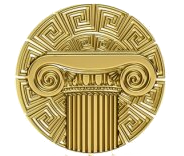 文明
文明



 航空航天
航空航天



 军事、国防和装备
军事、国防和装备


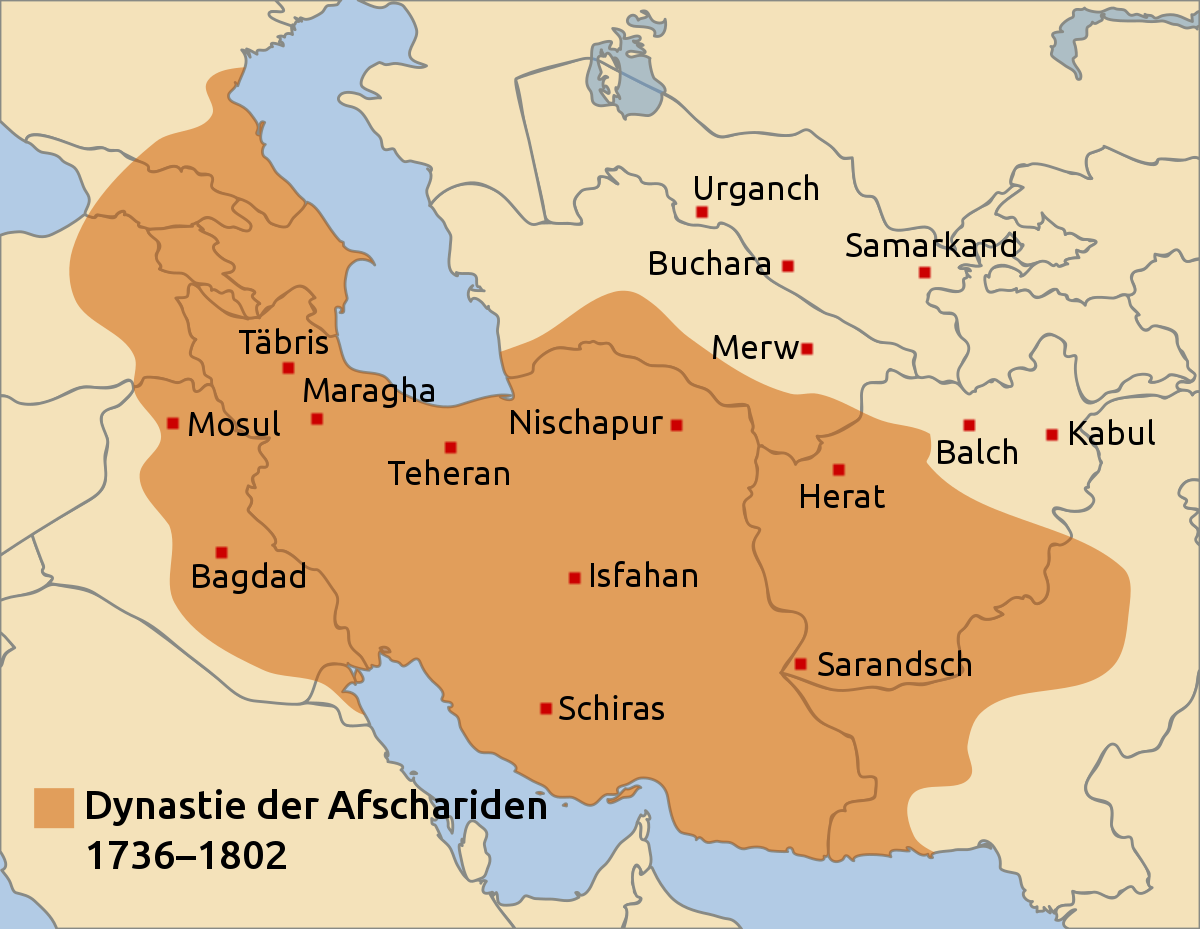
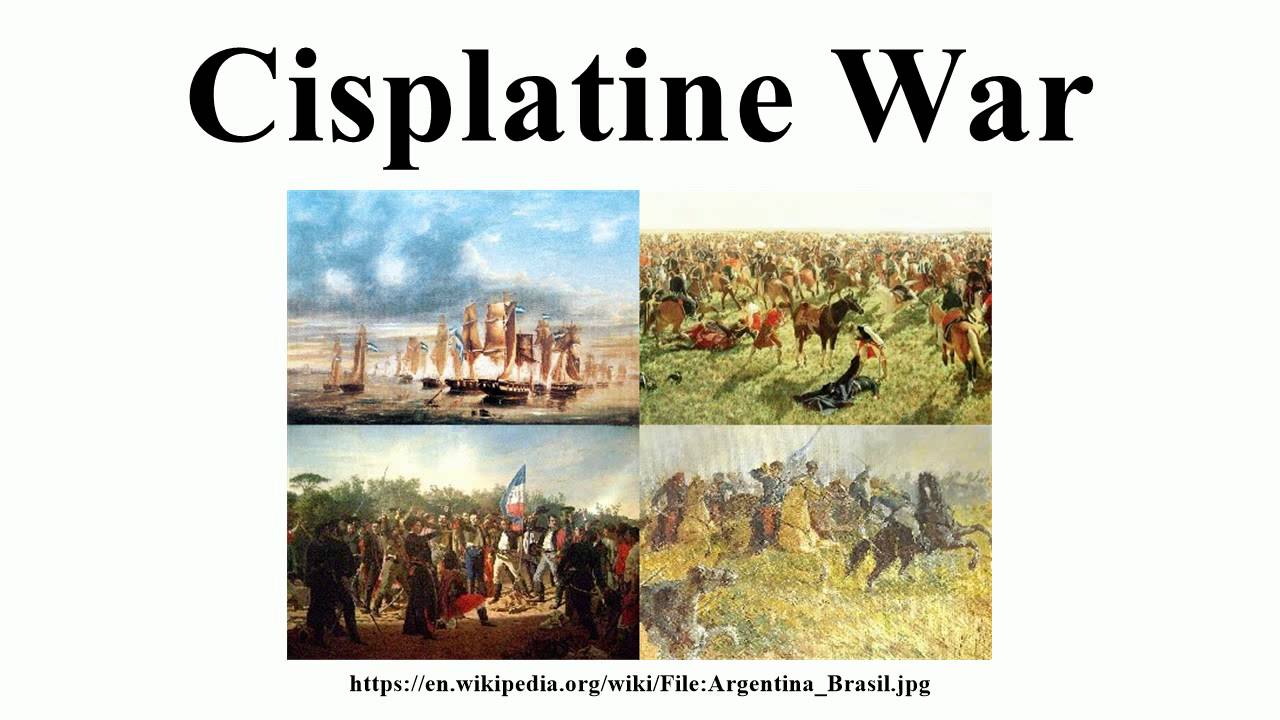
 阿拉斯加州
阿拉斯加州